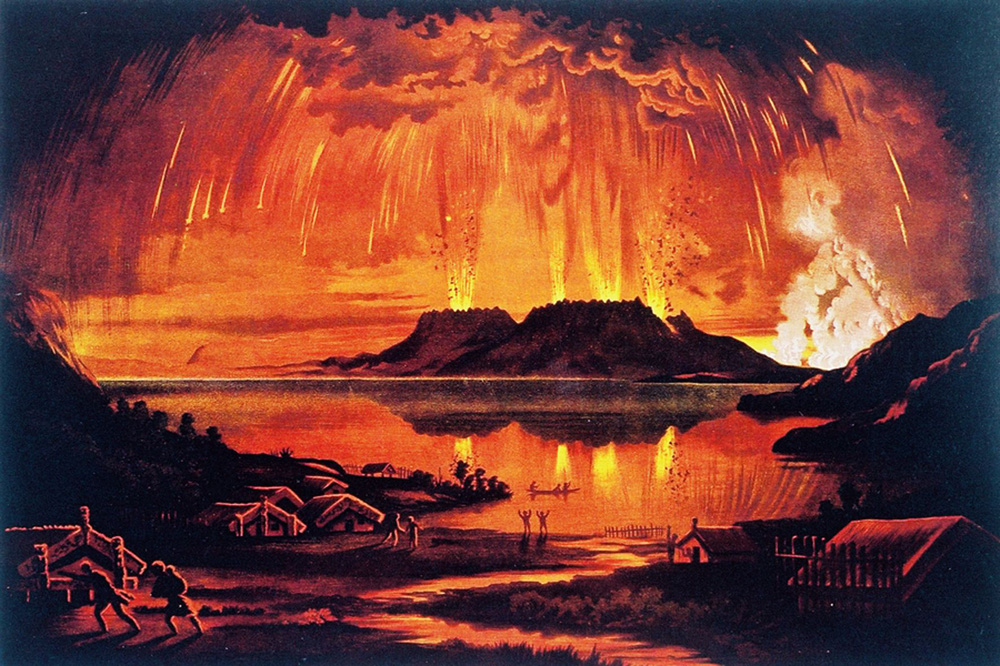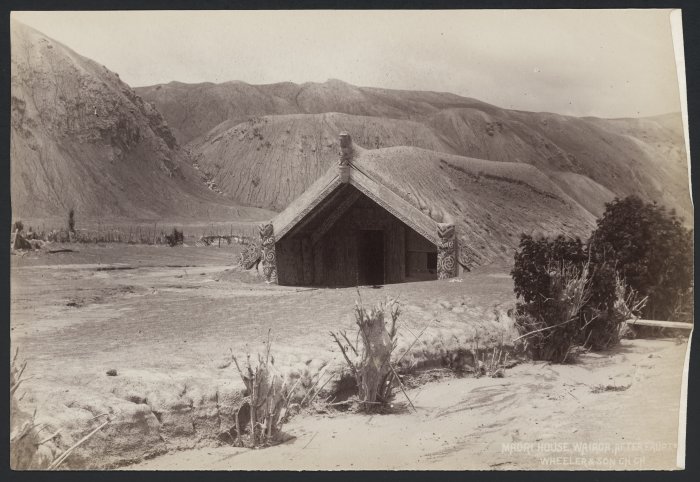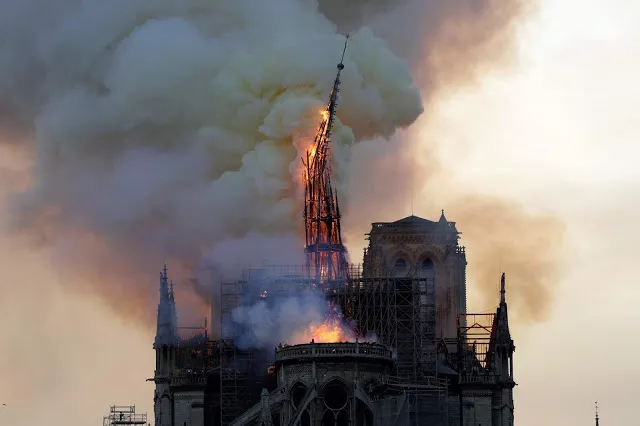
When I heard that Notre Dame Cathedral was burning, I could not help but feel a portent that trouble is brewing.
Having spent many years in Rotorua, much of the time at the family home on Lake Tarawera, it took my mind back to the view from our lakeside windows. We lived on a small bay with expansive views over the lake and on out to the three peaks of Mount Tarawera.
My old Manx Grandma didn?t like visiting Tarawera. It scared her. Being
extremely superstitious, like many folk from the Isle of Man, the stories of the 1886 eruption seemed very ominous and the mountain looked menacing and ever-present in her mind. It did not make it any better when she stumbled upon a coffee-table book which told the story of the mountain erupting and of the ghost canoe that appeared to forewarn of imminent disaster.

The eruption of June 10th, 1886 was one of the most powerful natural disasters in New Zealand?s brief recorded history. It destroyed the famous pink and white terraces, it buried the Maori Village of Te Wairoa and it showered the country with ash.
On May 31st, 2 weeks before the eruption, eye-witnesses reported seeing a ghostly Maori Waka emerging out of the morning mist that blanketed the lake. They said that the waka was carrying Maori whose hair was adorned with the feathers of the huia and the white heron; their flax robes wrapped around their bodies and, to the Maori who saw this sight, there was no doubt that this waka carried the souls of the dead.
No one had ever seen such a canoe on the lake before and it seemed clear to those that saw it that trouble was brewing.
Te Wairoa Village on the shore of Lake Tarawera was home to a sub-tribe of the Te Arawa people. It had become something of a tourist hub and it was the village from where the tourists would start their journey across the lake to view the magnificent Pink and White Terraces on Lake Rotomahana at the foot of Mount Tarawera. Things had been unsettled in Te Wairoa for some months, due to an outbreak of typhoid which had resulted in the death of their Chief, Aporo.
There had also been unusual thermal activity on the lake which caused sudden fluctuations of the water level.
There was an air of uncertainty and foreboding.

A few short weeks later, Mount Tarawera erupted and Te Wairoa, now known as the Buried Village, was all but destroyed by the fury. 150 people died. The volcano erupted ash 10 km into the air, lightning bore down and earthquakes rumbled and the people trembled as the noise from the blast was heard as far south as the northern South Island. The pink and white terraces were no more.
The now-famous Waimungu Valley was born out of this tragic event and it was with great courage and trepidation that my Gran strode through that boiling landscape one day; relieved to survive? only to have to reluctantly return to Tarawera, the harbinger of hell (as far as she was concerned). She said to me, ?I just want to go home where I feel safe?. I held her hand and said, ?Don?t worry Gran, it won?t happen again?.
Why caused my mind to turn to Tarawera as the news of the fire hit the news and internet?
Was it because there already had been portents of warning, foreboding and trouble brewing? Was it because the Catholic Church and Christianity in general, have been under attack? Or was it because the sheer fury and might of the fire reminded me of a volcanic eruption?
Or was it simply that, today, everything is a portent of something destructive?
Floods, fires, droughts, disasters both man-made and acts of nature seem to be around us all the time.
My Gran would say that trouble is brewing, and I fear that she would be right. But how bad will it be, if recent events are just the lead-up to something bigger and more dreadful?
And, with the current chaos in the world, I wonder how confident I would feel today if I had to reassure her not to worry. It won?t happen again.
I fear that I would probably say, ?Come on Gran. Let?s go!?
Only, I don?t know where that ?safe place? is any more.





